Accepted Scientific Name: Bulbine frutescens Willd.
Enum. Pl. (Willdenow) 1: 372. 1809 [Apr 1809] Willd.

Phalangium frutescens (Bulbine frutescens) Photo by: Forest Starr & Kim Starr
Habit at Pukalani, Maui, Hawaii, (USA). April 17, 2009.Flowers at Pukalani, Maui. April 17, 2009.
Origin and Habitat: Bulbine frutescensSN|11123]]SN|11123]] is a species of flowering plant in the genus Bulbine (Family: Asphodelaceae), native to southern Africa (occurs widespread throughout parts of Northern Cape, Western and Eastern Cape; however, it reaches its peak in the succulent-rich, dry valleys of Eastern Cape.), Lesotho and Swaziland. Its distribution in Namibia is only around Fish River Canyon and the extreme southern regions of the Namib Desert.
Habitat and ecology: Dry, sandy or rocky areas, usually with substandard soil. Succulent Karoo, Nama-karoo, fynbos, grassland and bushveld-savvana. The brightly coloured flowers attract luring bees and butterflies to feed.
Synonyms:
See all synonyms of Bulbine frutescens
back
Accepted name in llifle Database:Bulbine frutescens Willd.Enum. Pl. (Willdenow) 1: 372. 1809 [Apr 1809]Synonymy: 13
back
Common Names include:
ENGLISH: Stalked Bulbine, Onion Leaved Aloe, Shrubby Bulbine, Burn jelly plant, Cat's tail, Snake flower, Orange African Bulbine, Yellow Bulbine, Tostalked Bulbine
AFRIKAANS (Afrikaans): Geelkatstert, Kopiva, Wildikopieva, Kopieva, Copaiva, Rankkopieva, Balsem kopieva, Wildekopiva
ZULU (isiZulu): Ibhucu, Elimpofu
Description: The "stalked bulbine", Bulbine frutescensSN|11123]]SN|11123]], is a fast growing, succulent, evergreen perennial groundcover, with linear green leaves similar to onion leaf blades in opposite rows and clasping the stems at the base. It forms spreading clumps with greyish stems often bearing adventitious roots. The small 6-petaled yellow star shaped flowers with fluffy yellow stamens are carried on an upright, spreading raceme during spring (or occasionally at other times). The petals are either yellow or sometimes orange, which combines attractively with the fluffy yellow stamens to give a bi-coloured look. The yellow-flowered form is most common, but there are at least two different shades of apricot in cultivation, one of which is known as 'Hallmark'.
Bulbine comes from the Greek word bolbine, a general word for a bulbous plant, but the name is misleading, as plants do not have any bulbous base nor tuberous rootstock.
Stems: Shrubby erect to prostrate, winding, woody, branched 6-8 mm in diameter, that roots as it touches the ground allowing the plant to cover an area of 60-90 cm in diameter, branched, with the lower leaves 12-25 mm apart, the upper crowded.
Leaves: Long, thin, succulent 8–12, distichous, subterete, bright green to green-grey, very variable in length (usually 15-25 cm long) in the cultivated plant, 6 mm in diameter, flat in the lower part of the face, turgid in the upper part, semicircular on the back.
Inflorescence: Peduncle simple held 30-90 cm above the foliage. raceme 15-30 cm long, an 2,5 cm in diameter; lower pedicels 12 mm long very much incurved, bracts small, deltoid-cuspidate, fimbriate at the enlarged base.
Flowers: Perianth bright yellow or sometime orange, 8 mm long. Will notice the anthers are fringed in yellow, looking like small caterpillars inside the petals. Flowers open (and close) progressively from the bottom of the spike upwards.
Blooming season: Spring through summer, occasionally in other period of year depending on growing conditions. The long flowering stalk opens slowly, with a few star-shaped flowers at first, then more and more as the season continues.
Fruit (capsule): Globose, the size of a pea.
Seeds: 3–4 in a cell. Black dispersed by wind.
Bibliography: Major references and further lectures:
1) Forest & Kim Starr “Bulbine frutescens (Stalked bulbine)”. Plants of Hawaii. <http://www.starrenvironmental.com>. Web. 3 feb. 2015.
2) J. G. Baker “Flora Capensis” page 253, 1897
3) Wikipedia contributors. "Bulbine frutescens." Wikipedia, The Free Encyclopedia. Wikipedia, The Free Encyclopedia, 24 Sep. 2014. Web. 4 Feb. 2015.
4) Germishuizen, G. & Meyer, N.L. (eds.) “Plants of Southern Africa: an annotated checklist.” Strelitzia 14.: i-vi, 1-1231. National Botanical Institute, Pretoria. 2003
5) Hyam, R. & Pankhurst, R.J. ”Plants and their names : a concise dictionary,” Oxford: Oxford University Press, 1995
6) Dyson, A. “Discovering indigenous healing plants of the herb and fragrance gardens at Kirstenbosch National Botanical Garden.” NBI, Cape Town. 1998.
7) Joffe, P. “The gardener's guide to South African plants.” Table Mountain Publishers, Cape Town.1993.
8) Shireen Harris, Free State National Botanical Garden December 2003 “Bulbine frutescens (L.) Willd” in: Plantzafrica <http://www.plantzafrica.com> Web. 3 feb. 2015.
9) Marie Harrison “Groundcovers for the South” Pineapple Press Inc, 2006
10) Umberto Quattrocchi “CRC World Dictionary of Medicinal and Poisonous Plants: Common Names, Scientific Names, Eponyms, Synonyms, and Etymology” (5 Volume Set) CRC Press, 03 May 2012
11) Urs Eggli “Illustrated Handbook of Succulent Plants: Monocotyledons: Monocotyledon” Springer Science & Business Media, 17 lug 2001
12) Philip Miller “The gardeners dictionary” Volume 1, 1835
13) Malcolm Dee Hepplewhite & Witkoppen. Wildflower Nursery, Text and Photographs, 2013. “Bulbine frutescens” <http://witkoppenwildflower.co.za> Web. 3 feb. 2015.
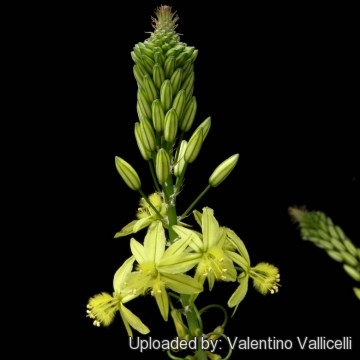 Phalangium frutescens (Bulbine frutescens) Photo by: Valentino Vallicelli
Phalangium frutescens (Bulbine frutescens) Photo by: Valentino Vallicelli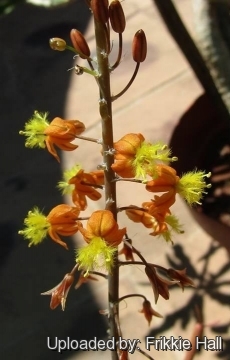 Bulbine frutescens orange flower (Bulbine frutescens) Photo by: Frikkie Hall
Bulbine frutescens orange flower (Bulbine frutescens) Photo by: Frikkie Hall Phalangium frutescens (Bulbine frutescens) Photo by: Carolina González
Phalangium frutescens (Bulbine frutescens) Photo by: Carolina González Phalangium frutescens (Bulbine frutescens) Photo by: Valentino Vallicelli
Phalangium frutescens (Bulbine frutescens) Photo by: Valentino Vallicelli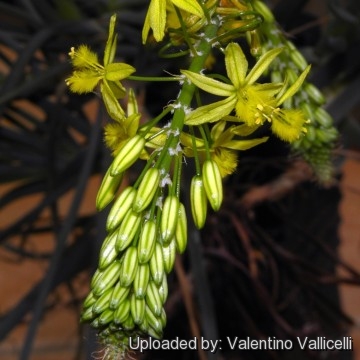 Phalangium frutescens (Bulbine frutescens) Photo by: Valentino Vallicelli
Phalangium frutescens (Bulbine frutescens) Photo by: Valentino Vallicelli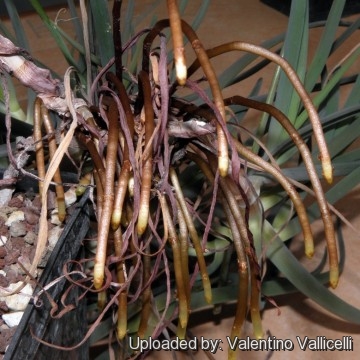 Phalangium frutescens (Bulbine frutescens) Photo by: Valentino Vallicelli
Phalangium frutescens (Bulbine frutescens) Photo by: Valentino Vallicelli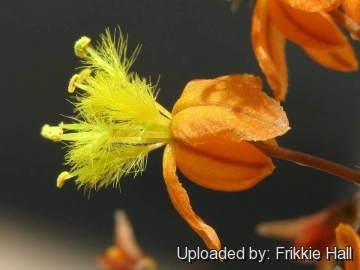 Bulbine frutescens orange flower (Bulbine frutescens) Photo by: Frikkie Hall
Bulbine frutescens orange flower (Bulbine frutescens) Photo by: Frikkie Hall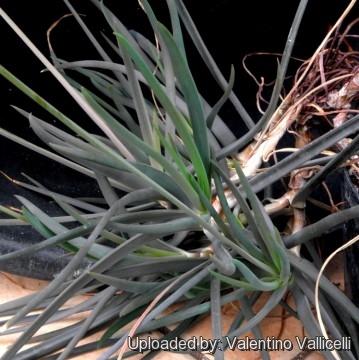 Phalangium frutescens (Bulbine frutescens) Photo by: Valentino Vallicelli
Phalangium frutescens (Bulbine frutescens) Photo by: Valentino VallicelliCultivation and Propagation: Bulbine frutescensSN|11123]]SN|11123]] is a popular, waterwise garden plant, especially when planted en masse as a ground cover, or in rock gardens. It is also cultivated for its medicinal properties. It is mostly dormant in summer, blooming in the spring, and then again in autumn although somewhat less.
Soil: For best results it should be planted in well-drained soil preferably enriched with compost.
Fertilization: Feed with a mulch of compost.
Moisture requirements: Plants are drought resistant, requiring very little water, but respond well to fairly regular watering.
Exposure: These plants prefer full sun, but they will also grow in semi-shade for part of the day. Although it will grow indoors, it requires maximum light.
Hardiness: This species is frost hardy.
Garden uses: Bulbine frutescensSN|11123]]SN|11123]] is often used in landscaping where a drought-resistant, tough groundcover is required. It also has its value in the home garden. It combines beautifully with blue dwarf agapanthus, flowering at the same time.
Maintenance: Prune it when untidy. Remove the old flower heads to encourage more flowering and to keep plants neat.
Medicinal uses: The gel or sap from leaves is a traditionally remedy for mosquito bites and to heal cuts, burns, rashes, cracked lips, acne, cold sores, mouth ulcers, areas of cracked skin and eczema. This plant is ideal to grow and is a useful first-aid remedy for childrens' daily knocks and scrapes. The Rastafarians make an infusion of a few fresh leaves in a cup of boiling water. The strained drink is taken for coughs, colds and arthritis.
Propagation: It can be propagated easily by stem cuttings, or either seed and division of clumps. The cuttings can be planted immediately and kept in a shady area. They do not need any special attention or treatment, and build strong roots in a couple of months. Once the seedlings have four leaves and the cuttings have a well-formed root system, they can be transplanted. Bulbine self-sows freely, so unwanted seedlings might appear.
Your Photos
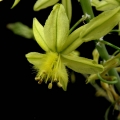
by Valentino Vallicelli

by Valentino Vallicelli

by Forest Starr & Kim Starr
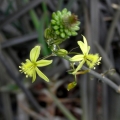
by Valentino Vallicelli

by Valentino Vallicelli























